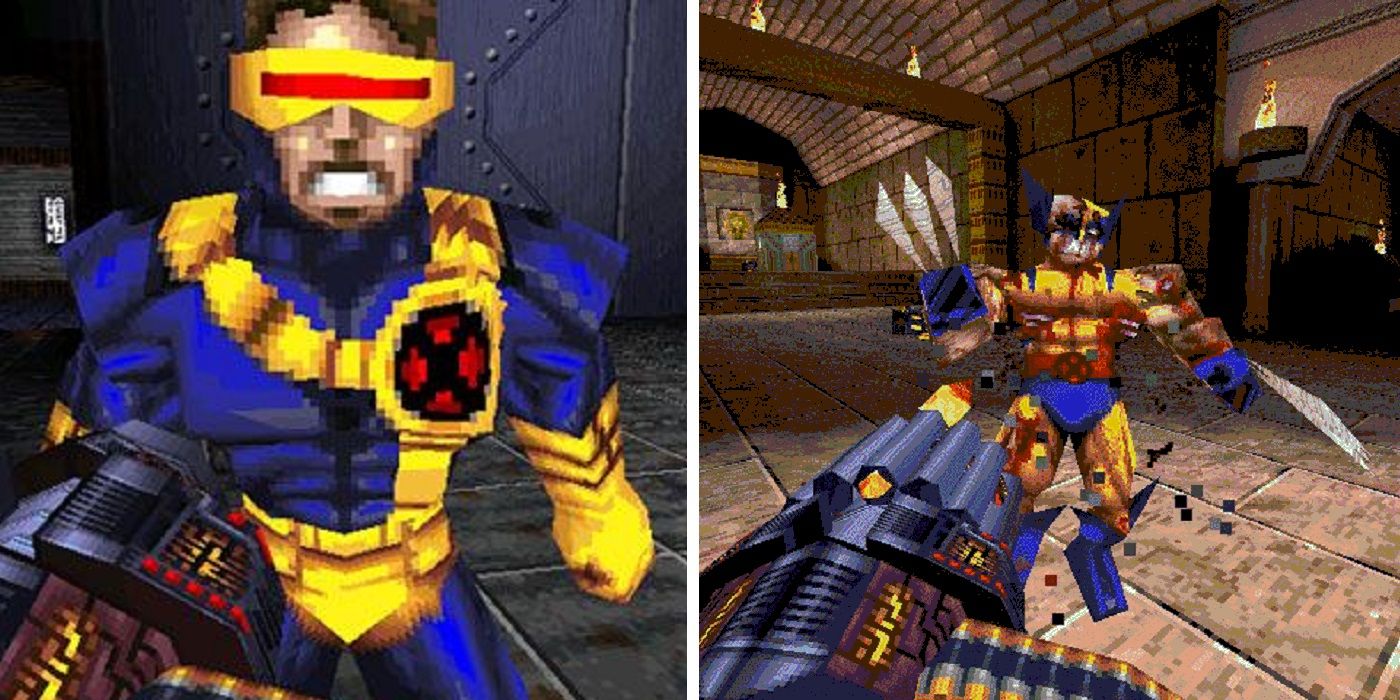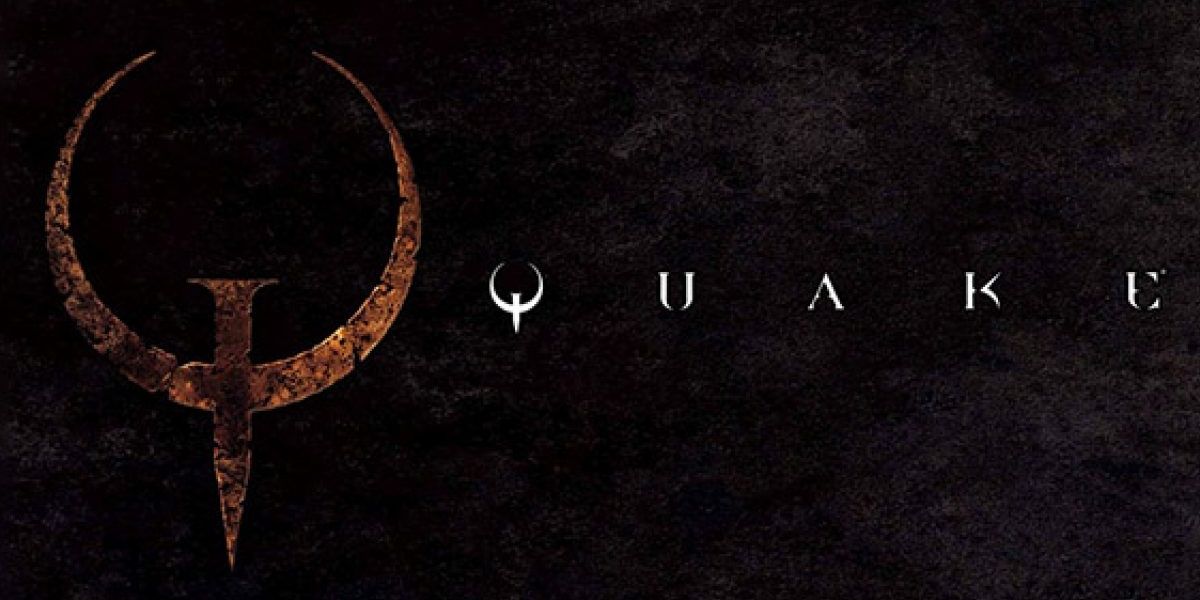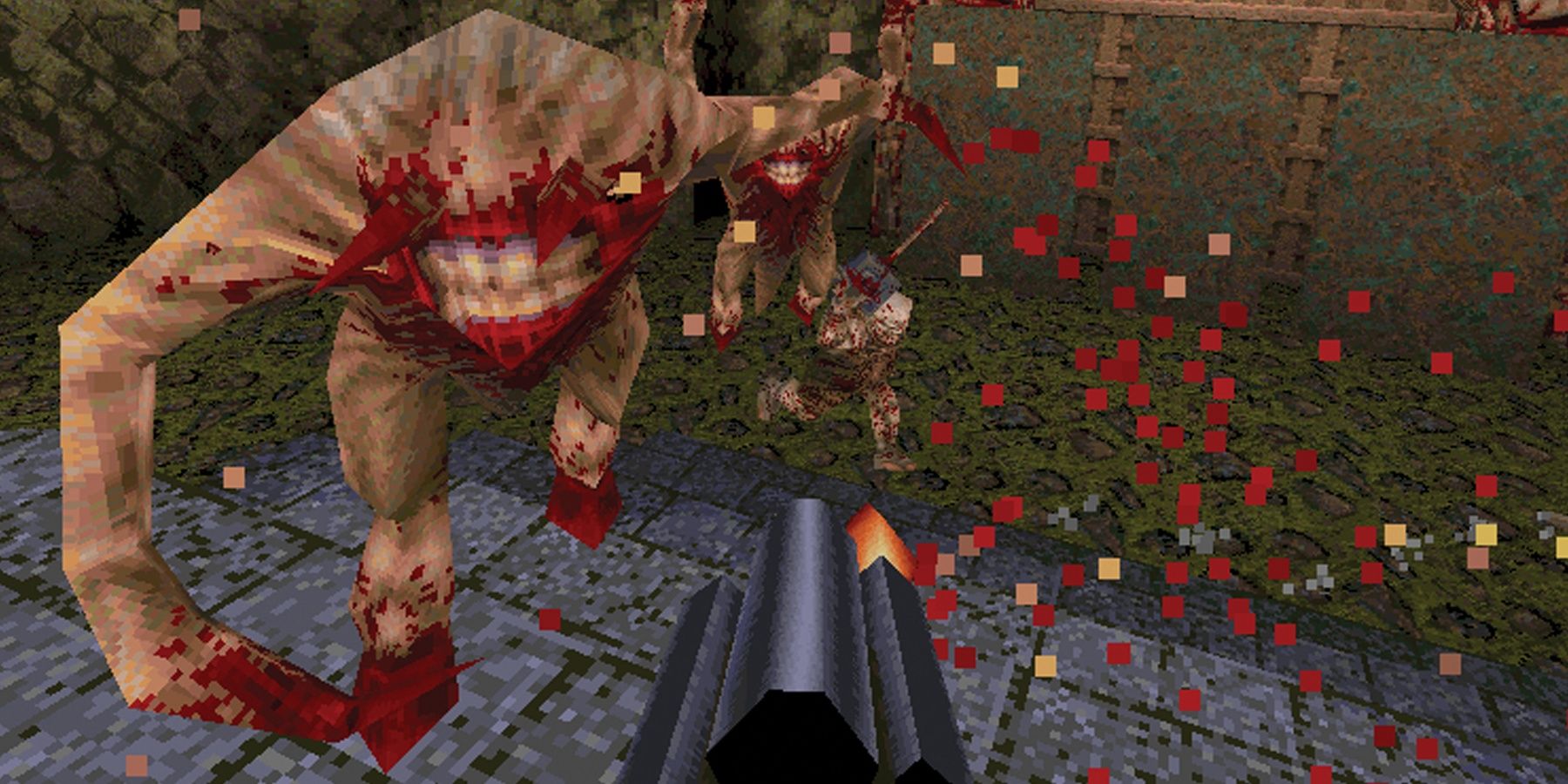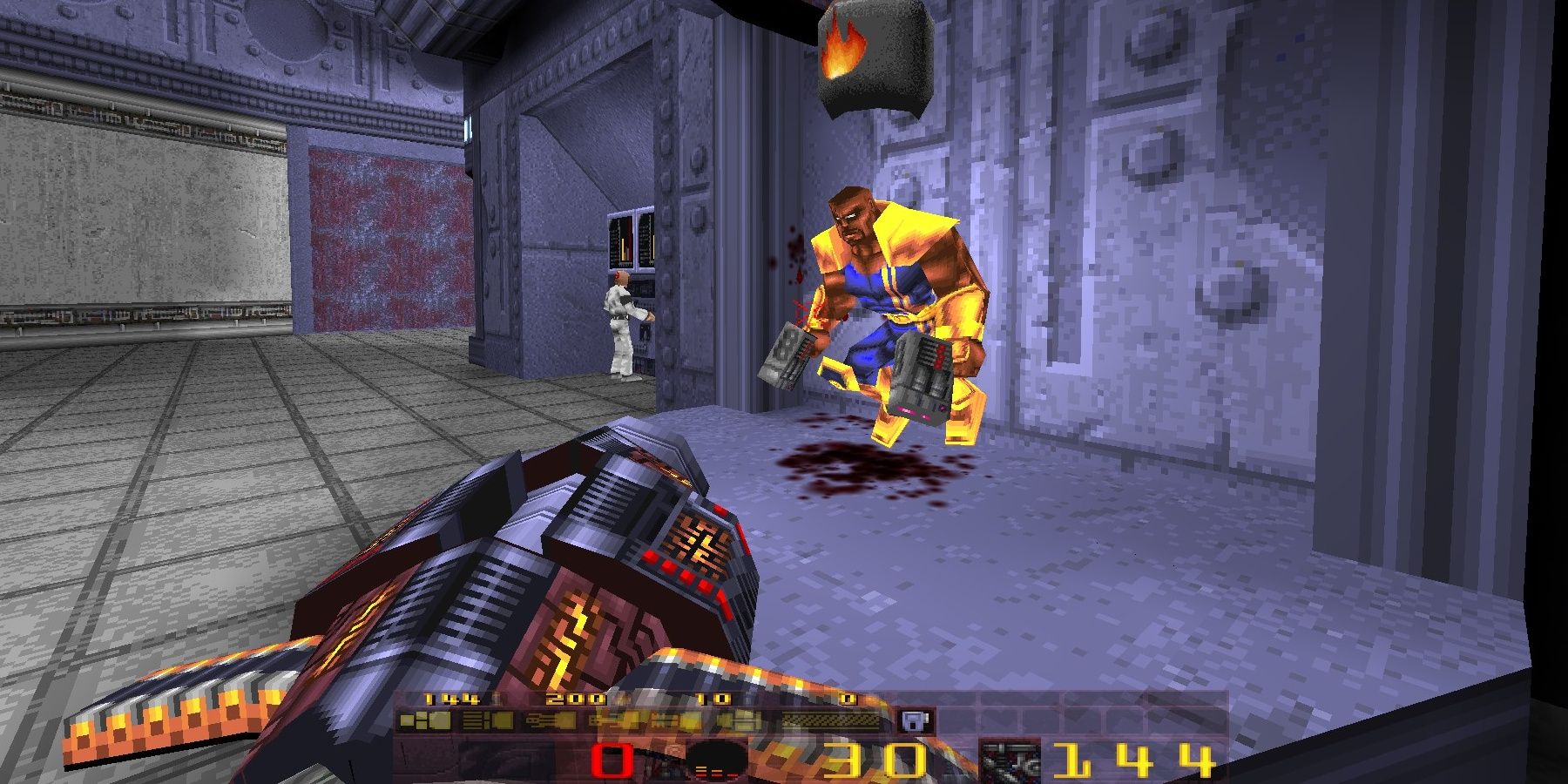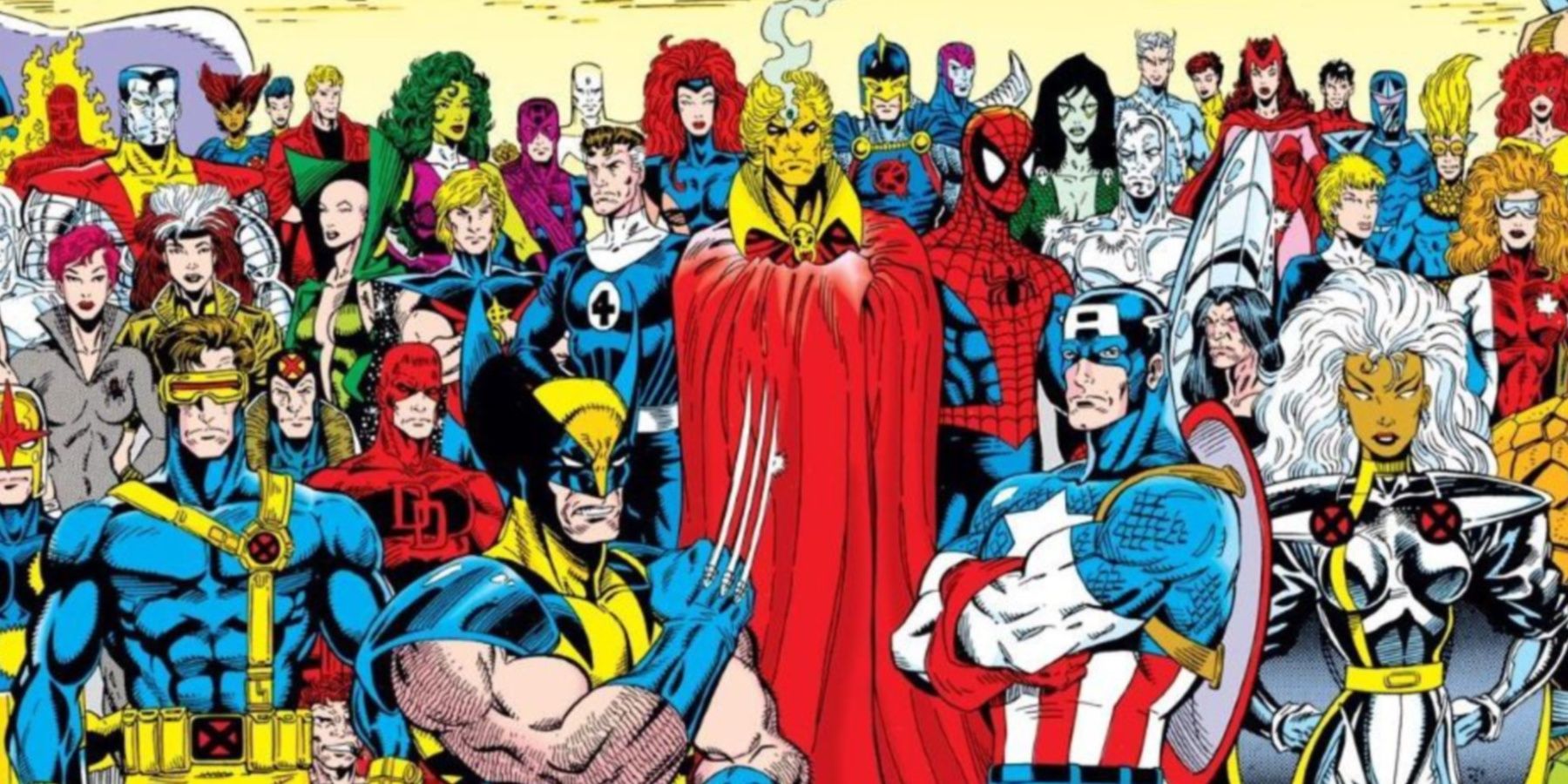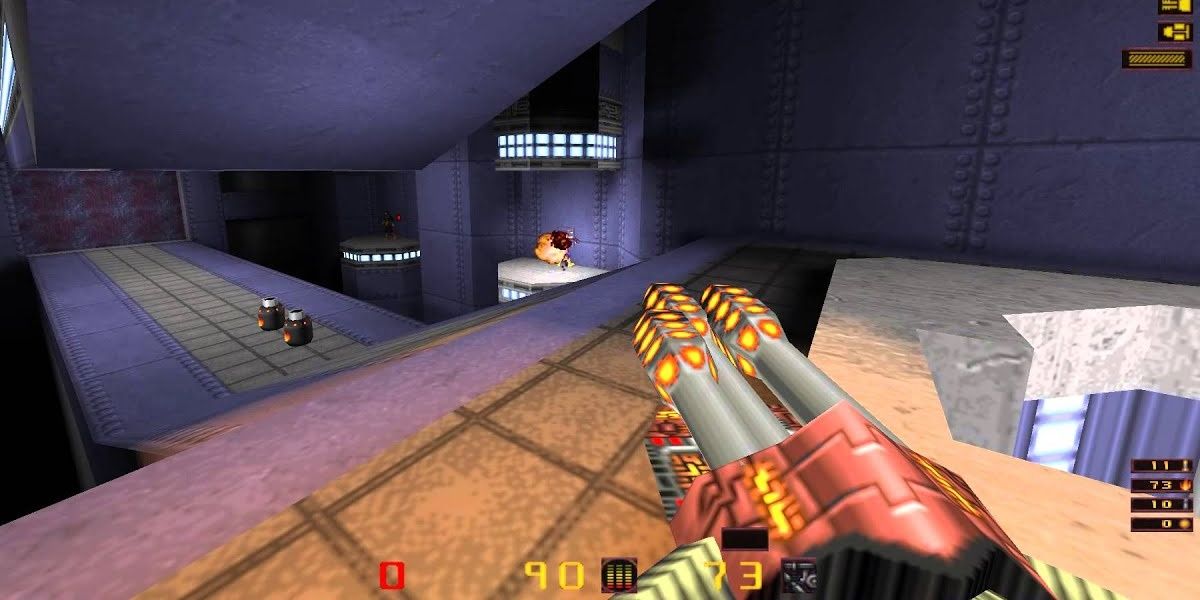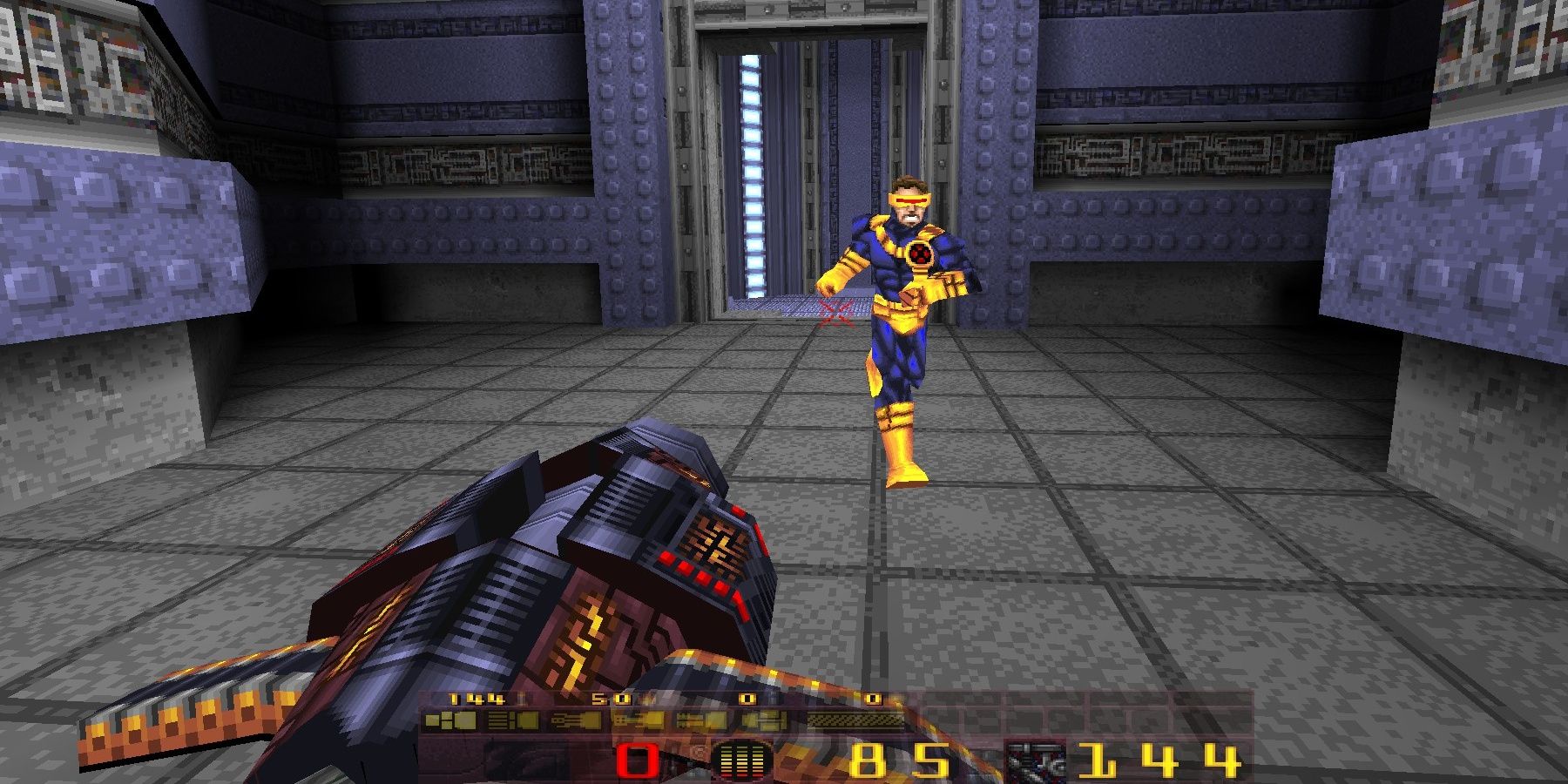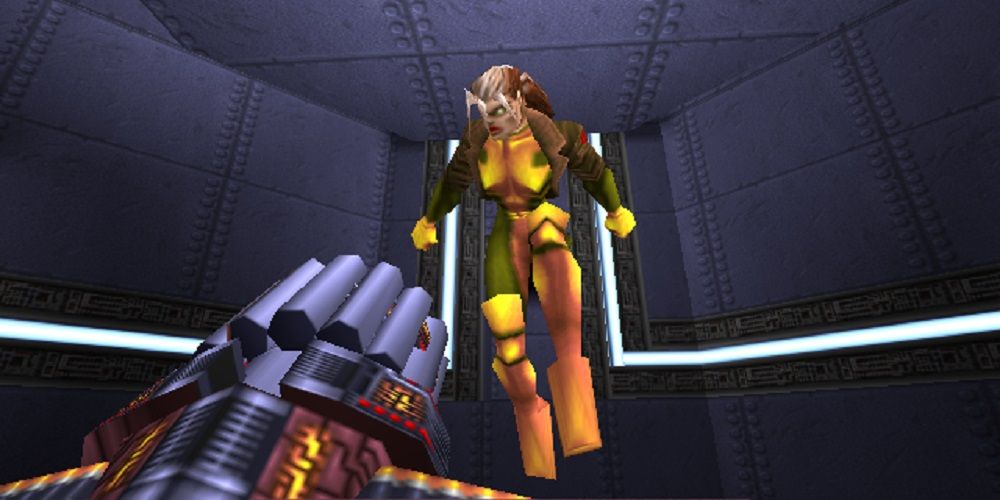The release of the Quake remaster in August 2021 sparked a renewed interest in the classic FPS game, as well as in its mods. Quake has a long history of being modded, and one of the early mods to make a big splash was X-Men: Ravages Of Apocalypse.
A total conversion mod that puts the player in the role of a cyborg tasked by Magneto with saving the world from an army of X-Men clones, this mod was a labor of love turned corporate project that saw an incredibly rough development cycle and harsh reviews from critics. However, the mod was loved by fans and still stands as a piece of video game history that has a lot to say about the industry today.
7 Quake Was The Perfect Game For Modders
When id Software released their hit game Doom in December 1993, and Doom II a year later, the games were a haven for modders. The ability to access the code allowed hobbyists to change the game to their hearts' content. There were still some limitations, however. When Quake was released in 1996, it did away with many of those limitations. Rather than only being able to alter existing characters, Quake allowed modders to add new material to the game.
Additionally, the game's 3D capabilities meant modders could spend less time animating frame-by-frame actions for every character and rather apply a 3D model and let the game do the work. With custom character models, custom levels, and altered gameplay mechanics, a skilled modder could turn Quake into an entirely new game.
6 Zero Gravity Entertainment: The Brains Behind The Mod
Into this atmosphere of anything-is-possible modding came Jonny Gorden, an Australian illustrator, animator, and video game superfan. Gorden was introduced to the craft of pixel art design on his Atari back in 1990, and he was working making assets for educational games when Quake was released.
He had previous success in the field of modding with Bugs Doom, a mod that replaced the characters in Doom with classic Looney Tunes such as Taz the Tasmanian Devil and Daffy Duck.
5 Began As A Test Of Character Modeling
After seeing the iconic design of Lara Croft's 3D model in 1996's Tomb Raider, Gorden wanted to test his own 3D modeling chops in the low-poly restrictions that games of the day demanded. Being a big X-Men fan, he decided to try his hand at modeling the mutant Storm. In an interview with Denis Murphy in 2017, Gorden said he learned two things.
"One, it wasn't easy to make a character look good with such a limited polygon budget (under 500 polys), and two, I loved the challenge." He followed up his Storm design by making a Wolverine model before realizing the behavior of the Quake enemy the Fiend would map well to Wolverine. These two characters were the first step into what would eventually become Ravages of Apocalypse.
4 A Fan Project Gets Picked Up By Marvel
Once he realized he wanted to make a full X-Men mod for Quake, Gorden began promoting the project to garner interest. He found it very quickly, with people from all over the world making inquiries into the project. One of the biggest questions was that of legality. There were other mods that made use of big IPs, but they were often forced to be taken down by the rights holders. But Gorden wasn't worried, instead choosing to focus on development.
"It really wasn't a problem until I was ready to release something," he said in his interview with Murphy. But he didn't need to wait long, as within a month he received a call from Kyle Bousquet, a licensing manager with contacts at Marvel. Marvel was in a slump in the mid-'90s, having seen a massive drop in popularity. In an effort to combat this, they created Marvel Entertainment, a division tasked with seeking out opportunities to expand the franchise into other media formats. They were impressed with Gorden's work and decided to take Ravages of Apocalypse on as an official project.
3 Development Time Was Nothing, And Neither Was The Budget
Marvel wanted to release the game in time for Christmas 1997, which gave Gorden and his small team only three months to deliver. With his original idea, this seemed doable even on the less-than-shoestring budget Marvel gave them. His initial plan was to design a single level, X-Mansion, and use existing Quake levels for the rest. Add in a few characters, and it would be an achievable goal. However, thanks to the easy nature of Quake modding, id Software was receiving thousands of requests for official licensing. To combat the tide, they were only accepting projects that made a substantial change to the existing game's content.
This meant that Gorden and his team had to add more levels to complete the project, eventually landing on a total of 12. To meet the growing demand, more and more people were brought on from around the world, bringing the final team to about 26. With just a few months to go and nowhere near enough money to cover their expenses, the team worked endlessly. Gorden recalls working 20 hour days, 7 days a week for two months. This schedule is an echo of the crunch culture that now plagues development studios, with workers being asked to devote unhealthy amounts of time to deliver games on schedule.
2 Intentionally Designed To Capture Each Character Within The Limits Of The Engine
Despite the harsh conditions and minimal budget, Gorden and his team were pushing the Quake engine to its limits to design a game that played and felt distinctly X-Men. The player character is a shape-shifting cyborg built by Magneto and can morph their arm into a variety of weapons, each a custom re-texture of the classic Quake armory. This allowed the player to have access to all the weapons from the jump, rather than finding them as upgrades.
Gorden used this to his advantage by making each enemy weak to and strong against different weapons. The player is forced to change up their strategy as they face off against the different mutant clones in the game. "It was really important to me for the characters to be as authentic as possible," he said in the interview, "which did make balancing them tricky." In the end, twelve X-Men made it into the game, plus Apocalypse and Mister Sinister as bosses.
1 Crunch & Money Issues Led To Negative Reviews
After a beleaguered development cycle, Zero Gravity Games' first project finally hit the public eye. Critics were not kind, admonishing the game for being excessively difficult, too similar to regular Quake, and all-around a sloppy project. This is to be expected given the conditions that led to its release, and Gorden feels the same.
"I'm so proud of what we were able to accomplish...We made the best game we possibly could under difficult circumstances, and that's all I could have hoped for." Ravages of Apocalypse did not end up being a saving grace for Marvel's bottom line, nor did it turn into a lucrative career in games for Gorden, though he has continued to work in entertainment to this day. But it does represent a chapter of game development history that has mostly closed, with the business models being entirely different today. Players who are willing to do some hunting can still play this game, and the release of the Quake remaster has many wondering if Ravages of Apocalypse could potentially see the light of day once again.

